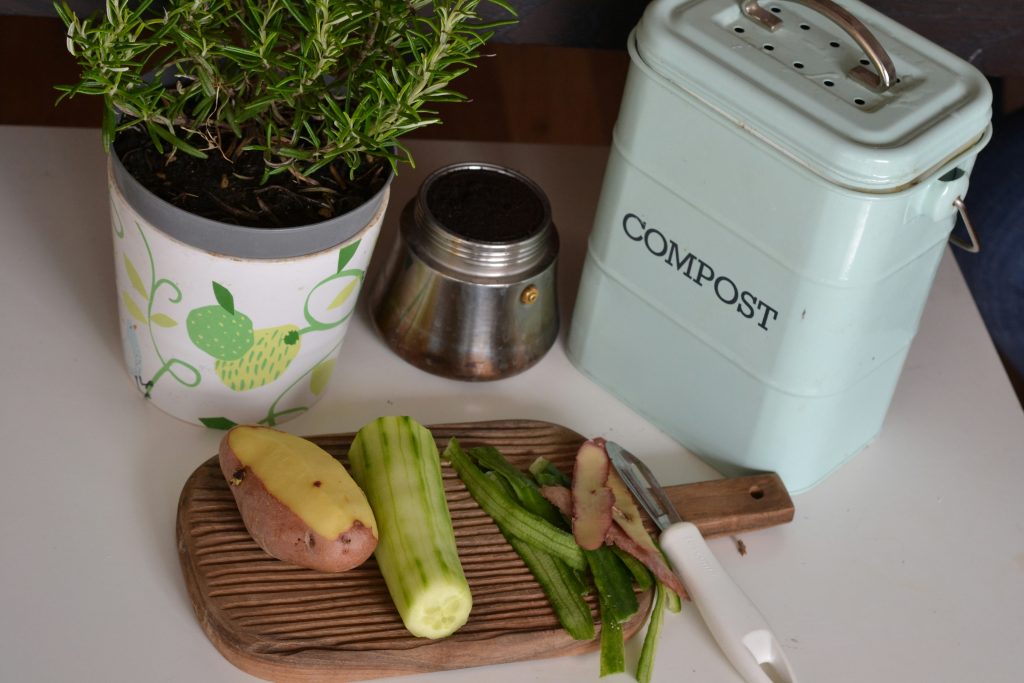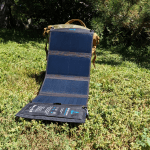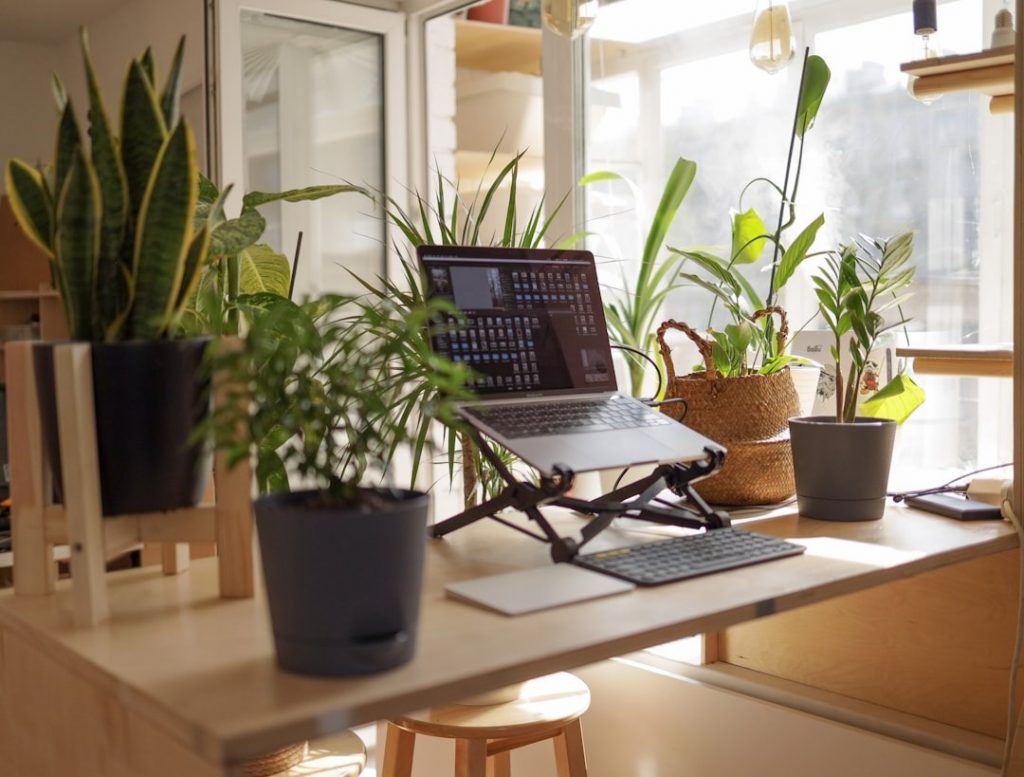Living in a small apartment myself, I know how tricky it can be to balance sustainability with convenience. In 2025, apartment composting feels like one of those eco habits that sounds amazing in theory — but in practice, it’s easy to wonder: is it really worth squeezing a compost bin next to my recycling and trying to manage smells in a tiny kitchen?
When I first looked into composting, I worried about the same things most apartment dwellers do: odors, fruit flies, and the classic “where do I even put this thing?” moment. But after trying a couple of different methods, I realized that while it does take some adjustment, the environmental benefits far outweigh the minor inconveniences — especially now that there are more compact, tech-driven options designed specifically for apartments.

This guide will take you through the real pros and cons, share my own impressions of different composting systems, and bring in examples from other urban composters around the world. By the end, you’ll be able to decide whether composting makes sense for your lifestyle, your space, and your sustainability goals.
So here’s the big question this article explores: is composting really worth it for small apartments in 2025? Together we’ll look at why composting matters right now, the very real challenges of doing it in limited space, and the different methods available. I’ll share not just facts and research, but also personal impressions and tips from my own experiments. By the end, you’ll have a clear sense of whether composting belongs in your apartment — and how to make it work if you decide to give it a try.
Table of Contents
Why Composting Matters in 2025
If there’s one thing that shocked me when I started researching composting, it was just how much food waste contributes to climate change. Globally, over 1.3 billion tons of food is wasted each year — that’s about one-third of all food produced. When that food ends up in landfills, it doesn’t just disappear; it decomposes without oxygen and produces methane, a greenhouse gas that’s about 25 times more potent than CO₂ over a 100-year period.
From an environmental standpoint, composting is one of the simplest and most effective ways to cut down methane emissions. Instead of sending food scraps to a landfill, composting allows them to break down naturally into nutrient-rich material that can be reused in gardens, potted plants, or even community green spaces. It closes the loop: waste becomes resource.
But 2025 isn’t just about the environment — it’s also about how we live in cities. With urban populations continuing to rise, most of us don’t have the luxury of big backyards or sprawling compost piles. That’s why apartment-friendly solutions are becoming more popular. In fact, some cities (like San Francisco and Milan) have even made composting mandatory, while others are rolling out community compost bins in apartment complexes or neighborhood drop-off points.
Personally, I find this trend exciting. It signals a shift from seeing sustainability as an individual burden to treating it as a shared responsibility. When I first started, I felt like my little compost bin was a drop in the ocean — but knowing that entire buildings and neighborhoods are adopting these practices makes my effort feel part of something larger.
Another reason composting matters right now is its role in the circular economy. In 2025, more businesses are looking at ways to reduce waste at every stage of production. When individuals compost at home, they’re contributing to that cycle by turning waste into something valuable again. It’s a small but powerful act of resistance against the “take, make, dispose” model that has dominated for decades.
Of course, there’s also the personal benefit. Composting has made me more mindful of the food I buy and the scraps I create. I waste less because I see the waste more directly — not hidden in a trash bag, but sitting in a little bin that I interact with daily. It’s changed how I cook, how I plan meals, and even how I shop.
So is apartment composting worth it in 2025? On a global scale, absolutely. The environmental stakes are clear. But whether it’s worth it for you in a small apartment depends on practical realities — space, time, and lifestyle. That’s where we’ll go next: the real challenges of composting in tiny living spaces.
Challenges of Composting in Small Apartments
When I first started exploring composting in my apartment, I’ll be honest: the idea sounded great, but the practical reality was intimidating. Composting in small spaces comes with a very different set of challenges than doing it in a backyard or suburban home. Let’s break down the ones I personally wrestled with, along with what I’ve learned from other apartment composters along the way.
Composting in an apartment is not only a great way to reduce household waste, but also an effective step toward living more sustainably. By turning food scraps into nutrient-rich compost, you help reduce methane emissions from landfills and contribute to a healthier planet. Apartment composting doesn’t require much space — even small containers or balcony setups can make a difference. With a bit of consistency and care, you can transform everyday kitchen waste into valuable compost that nourishes plants and supports a circular lifestyle.
- U.S. Environmental Protection Agency (EPA) — Composting Basics
- United Nations Environment Programme — Food Waste and Composting
- National Geographic — How to Start Composting at Home
- The Spruce — Indoor Composting Tips for Apartment Dwellers
1. Limited Space
Space is always the biggest issue in apartment living. I don’t know about you, but my kitchen counter real estate is already fighting for attention — coffee maker, toaster, air fryer, and the usual pile of groceries I haven’t put away yet. Adding a compost bin into that mix felt like squeezing one more guest into an already overcrowded elevator.
Most apartment compost bins are designed to be compact, but “compact” is relative. A countertop bin still takes up space that could have been used for something else. Some people store their bins under the sink, but that comes with its own challenges if you’re also trying to fit cleaning supplies and recycling.
What I’ve realized is that composting in small apartments requires a mindset shift: you’re not trying to recreate the backyard pile. You need something scaled down — often just a few liters in capacity — that can be emptied regularly. It’s more about convenience and routine than having a big stockpile of compost.
2. Odors and Pests
Let’s talk about the elephant in the room — or rather, the fruit flies in the kitchen. Before I tried composting, I worried my apartment would smell like a trash heap. In reality, odors are manageable if you use the right system, but it does take a little effort.
The first time I left my scraps sitting for too long, I learned the hard way: banana peels and onion skins in a poorly sealed container equal instant fruit fly party. In a small apartment, odors spread quickly, and there’s no basement or garage to hide a stinky bin.
Apartment composting is an effective way to reduce waste while living sustainably, even in limited spaces.
That said, there are fixes. Many countertop bins now come with charcoal filters that do a surprisingly good job at odor control. Some systems, like bokashi bins, actually ferment food scraps, which smells more like pickles than garbage. Worm bins (vermicomposting) can be odor-free if maintained properly, though I’ll admit the thought of worms in my kitchen took me a while to warm up to.
Still, if you’re someone who can’t stand the slightest smell, composting might feel like a constant battle. It’s doable, but you have to be consistent about emptying and maintaining your bin.
3. Lack of Outdoor Access
This was one of my biggest sticking points: what do I actually do with the compost once it’s ready? In a suburban setting, you just toss it into the garden or spread it on your lawn. In an apartment, there’s usually no lawn, no garden, and sometimes not even a balcony.
When I first started, I had visions of bags of compost piling up in my living room because I had nowhere to put it. Luckily, there are solutions: community gardens, drop-off stations, or even city collection programs (if you live somewhere progressive like San Francisco). Some friends of mine in Europe can just bring their scraps to a designated neighborhood bin.
But the truth is, not every city offers these options. In those cases, you either need to use a composting method that produces less bulk (like bokashi, where you bury the fermented scraps later), or find a creative use — like mixing small amounts into potted plants. Without outdoor access, composting becomes less about producing fertilizer and more about responsibly processing waste.
4. Building and Landlord Restrictions
Another challenge I ran into was simply getting my landlord’s approval. Some buildings have strict rules about waste storage, pests, and odors. One property manager I spoke to was convinced a worm bin would attract rats (it doesn’t, if done correctly).
Depending on your lease, you might technically not be allowed to keep certain composting setups inside your unit. Even if it’s permitted, neighbors may complain if they think your composting is causing smells in shared hallways or trash rooms.
For me, communication was key. I explained what system I was using, how it controlled odors, and why it wouldn’t create pest problems. Being proactive helped avoid misunderstandings. But I won’t sugarcoat it: some landlords are resistant, and that can be a dealbreaker.
My Honest Take on the Challenges
Here’s my honest reflection: composting in a small apartment is not effortless. It requires creativity, consistency, and sometimes compromise. I’ve had moments where I thought, Why am I doing this? — like when my bin got too full before I had a chance to empty it, or when I discovered fruit flies hovering around my sink.
But the flipside is that overcoming these challenges has made me more mindful of my habits. I waste less food now, because I don’t want to deal with an overflowing bin. I’ve also become part of a small community of composters in my city — people who swap tips, share drop-off locations, and even exchange finished compost for houseplants.
So yes, the challenges are real. But for me, they haven’t been dealbreakers. They’ve just been reminders that composting in a small apartment is less about perfection and more about persistence.
Different Composting Methods for Apartments
When I started researching composting for my small apartment, I quickly realized there isn’t a single “right” way to do it. Instead, there are several methods, each with its own strengths and trade-offs. What works for me might not work for you — and vice versa. The key is to find a system that matches your space, lifestyle, and tolerance for things like maintenance and odors.
Here are the four main composting methods I’ve explored, along with my personal take on each.
1. Bokashi Composting
The first system I tried was bokashi composting, which is originally a Japanese method. Instead of letting food scraps rot, bokashi uses a fermentation process. You place scraps into an airtight bucket, sprinkle a special bran inoculated with beneficial microbes, and let the fermentation process do the work.
How it works:
- Collect food waste (yes, even meat and dairy, which most compost systems struggle with).
- Sprinkle bokashi bran over each layer.
- Seal the bucket tightly.
- After a couple of weeks, you get pre-compost that needs to be buried in soil or added to a larger compost system.
Pros:
- Works indoors — airtight bucket means minimal odors.
- Handles tricky items like meat, cheese, and oily foods.
- Compact — great for tiny kitchens.
Cons:
- You still need somewhere to bury the fermented scraps (outdoor soil, community garden, or planter boxes).
- Requires ongoing purchase of bokashi bran.
- The “pickle smell” can bother some people.
My experience:
I liked bokashi for its convenience — I could toss almost anything in without worrying about balance. But since I didn’t have a yard, finding a final disposal spot was sometimes tricky. Eventually, I partnered with a local community garden that accepted bokashi scraps, which made the system sustainable for me.
2. Vermicomposting (Worm Bins)
This one made me pause the longest before trying. Vermicomposting uses red worms (usually Eisenia fetida) to break down food scraps into nutrient-rich worm castings. Yes, it sounds weird to keep worms in your kitchen — but surprisingly, it works.
How it works:
- Worms live in a bin with bedding (shredded paper, cardboard, coconut coir).
- You feed them small amounts of food scraps regularly.
- Over time, they eat and produce castings (worm compost) that can be used as fertilizer.
Pros:
- Produces some of the best compost for plants.
- Low odor if maintained correctly.
- Educational — it’s kind of fascinating to watch worms do their work.
Cons:
- Requires care: don’t overfeed, keep moisture balanced.
- Worms can die if conditions aren’t right (too hot, too cold, too wet, too dry).
- Some people are simply squeamish about worms indoors.
My experience:
I’ll admit, I was skeptical. Worms in my living space? But once I tried it, I was impressed. The bin didn’t smell, and the worms quietly did their job. That said, it did require some trial and error. I overfed them at first and ended up with a messy bin. Once I found the rhythm, though, it became one of the most rewarding methods.
3. Electric Composters
Tech has entered the composting world, and electric composters like the Lomi or Vitamix FoodCycler are becoming popular in apartments. These devices plug into the wall and use heat, aeration, and grinding to break down food scraps quickly — sometimes in just a few hours.
How it works:
- Load the machine with food scraps.
- Press a button.
- The machine dries, grinds, and partially decomposes the material.
- The output is a soil-like amendment that can be mixed into soil.
Pros:
- Fast and clean — no odors, no pests.
- Very compact and sleek design.
- Requires minimal effort beyond loading and unloading.
Cons:
- Expensive upfront ($300–$500+).
- Requires electricity.
- The output isn’t always true compost; it’s more of a soil conditioner.
My experience:
This was by far the easiest method. It felt like using a kitchen appliance, not managing a compost system. The downside, of course, was cost. I borrowed a Lomi from a friend for a month, and while I loved the convenience, I wasn’t ready to spend that much. If budget isn’t an issue, though, this is hands-down the most apartment-friendly option.
4. Community Composting Drop-Offs
Not everyone wants a bin in their apartment, and that’s where community composting comes in. Many cities now have programs where you can drop off your food scraps at designated bins, farmers markets, or community gardens.
How it works:
- Collect scraps in a small container or freezer.
- Once or twice a week, bring them to a drop-off point.
- The scraps are processed in larger compost systems managed by the community.
Pros:
- No need to manage a system at home.
- Scales better — your scraps become part of a larger composting effort.
- Often free or included in city services.
Cons:
- Requires regular trips to drop-off sites.
- Not available in every city.
- You don’t always get finished compost back.
My experience:
This option worked great when I lived near a farmers market with a composting program. I kept my scraps in the freezer (which completely eliminated odor) and dropped them off once a week. It felt good to be part of a community solution, though I missed having finished compost for my plants.
Comparing the Options
When I put all these methods side by side, here’s how I see them:
- Bokashi: Best if you want to compost everything (including meat/dairy) and don’t mind finding a disposal site.
- Vermicomposting: Best if you like the idea of producing high-quality compost for plants and don’t mind worm care.
- Electric Composter: Best for convenience, cleanliness, and speed — but expensive.
- Community Drop-Offs: Best for people who don’t want a bin at home but still want to compost responsibly.
Ultimately, I’ve rotated between systems depending on my living situation. In one apartment, bokashi made sense because I had access to a garden to bury scraps. Later, community drop-off fit better when my kitchen was tiny.
The important thing is that no matter which method you choose, you’re keeping food waste out of landfills. And for me, that makes the effort worthwhile.
Cost-Benefit Analysis: Is It Worth It?
After trying different composting methods in my small apartments, I eventually had to sit down and ask the practical question: is this really worth it? Beyond the environmental benefits, composting takes up mental space, physical space, and sometimes money. Let’s look at it from a cost-benefit perspective.
Upfront Costs
Depending on the method, the initial cost of composting can vary a lot:
- Bokashi: Around $50–$70 for a starter kit (bucket + bran). Ongoing cost: bran refills.
- Vermicomposting: About $80–$150 for a worm bin setup (though some people DIY it cheaper). Ongoing cost: worm food is basically your scraps, so low.
- Electric composters: $300–$500+ upfront, plus occasional filter or pod replacements.
- Community drop-off: Usually free, sometimes $5–$10 per month if it’s a managed program.
When I first looked at those numbers, I thought, why would I spend money to deal with garbage? But over time, I realized I was also saving in unexpected ways.
Long-Term Savings
Here’s what I noticed:
- Less spent on fertilizers/soil: I grow herbs and a few plants in my apartment. With vermicomposting, I didn’t need to buy expensive plant food. The worm castings worked even better.
- Fewer trash bags: Food scraps are heavy. By composting them, my garbage bags filled up slower, and I used fewer of them. That’s not a huge savings, but it adds up.
- Lower guilt cost: Okay, this one’s not financial, but I genuinely feel better knowing my scraps aren’t just rotting in a landfill. For me, that peace of mind is worth something.
Time and Effort
Time is another big “cost.”
- Bokashi: Takes about 2 minutes a day (toss scraps, sprinkle bran, seal). Emptying the bucket can take 30 minutes once it’s full.
- Vermicomposting: Needs regular but light care — feeding scraps, keeping bedding balanced, occasional harvesting.
- Electric composters: Basically zero effort beyond pressing a button.
- Community drop-off: A few minutes a week to collect scraps and walk them over.
For me, none of these felt overwhelming once they became habits. The only time composting felt like “too much” was when I went on vacation and came back to a neglected bin.
Eco Impact vs. Convenience
This is where the analysis gets personal. Composting isn’t just about me saving money; it’s about the environmental payoff. Even a small bin diverts a surprising amount of waste.
In my first year of composting, I estimated I diverted about 150 pounds of food scraps from landfill. That’s just me, in a one-bedroom apartment. Scale that up to an entire building or neighborhood, and the impact is significant.
But here’s the trade-off: convenience. Composting is less convenient than just throwing scraps in the trash. If you’re someone with a very busy lifestyle, the effort might feel like a burden. And I’ll be honest — there were weeks when I slipped back into old habits because it was easier.
My Verdict: Worth It?
For me, yes — composting is worth it, even in a small apartment. The financial savings aren’t huge, but they’re real. The time commitment is manageable. And the environmental impact feels tangible when I see my scraps turning into something useful instead of rotting in a landfill.
That said, I wouldn’t recommend diving in blindly. It’s important to choose the right system for your situation. If you hate smells and want zero effort, go for an electric composter. If you’re on a budget but motivated, bokashi or a worm bin might fit better. And if you truly don’t have the space or tolerance for any of it, community drop-off is still a meaningful contribution.
At the end of the day, composting in a small apartment is less about perfection and more about participation. It’s about doing what you can, within your means, to be part of the solution. And in my book, that makes it absolutely worth it.
Case Studies & Real-Life Experiences
When I first started composting in my apartment, I felt like I was fumbling through trial and error alone. But the truth is, thousands of other city dwellers around the world are figuring this out too — often in spaces even smaller than mine. Looking at their experiences helped me put my own into perspective. Let me share a few stories and examples that stood out to me.
New York City Micro-Apartments
New York City is famous for its tiny living spaces, so naturally I wanted to know how people there handle composting. I joined an online forum where several New Yorkers described their setups. Most used one of two approaches: freezer storage for scraps + community drop-off, or electric composters.
One Brooklyn resident I chatted with told me she freezes all her food waste in resealable bags and drops them off at her local Greenmarket once a week. “No smell, no mess, and no space needed,” she explained. At first, I thought it sounded like extra work, but she said it quickly became routine — just like taking out the recycling.
On the other end, another friend in Manhattan swears by her Lomi composter. She paid about $400 for it, which is steep, but she said the convenience is worth it. “It’s basically like owning a dishwasher,” she told me. “I dump in my scraps, push a button, and wake up to something I can mix into my plants’ soil.”
Hearing their stories reassured me that my small space wasn’t a barrier — it was about finding a system that matched my lifestyle.
Tokyo Small Flats
Tokyo is another city where apartments are notoriously compact. Interestingly, vermicomposting seems to be more common there than I expected. I read about a Tokyo office worker who keeps a worm bin on her balcony, even though the space is barely big enough for a chair. She said it’s surprisingly therapeutic: feeding the worms became part of her daily routine, like watering plants.
What struck me was how she framed composting not just as waste management, but as a form of mindful living. In a city where life moves fast, her worm bin became a small ritual that grounded her. I realized then that composting could be more than just a chore — it could be a habit that connects me to nature, even in an urban high-rise.
European Green Initiatives
When I visited friends in Berlin last year, I noticed something different: composting wasn’t treated as optional — it was built into the system. Their apartment building had a dedicated organic waste bin in the courtyard, alongside recycling and trash. Every resident was expected to separate food waste.
My friends told me that Germany’s strict recycling and composting policies make participation almost effortless. There’s no question of “should I compost?” — it’s just part of everyday life. France and Italy have similar systems, with some cities even fining residents who don’t separate food waste.
Seeing this made me think about how much easier composting would be if cities treated it as a collective responsibility. In places like New York or Tokyo, the burden often falls on individuals. In Berlin, it’s simply the norm.
Surveys and Adoption Rates
I also dug into some data. A 2024 survey from a U.S. environmental nonprofit reported that about 27% of apartment dwellers said they were actively composting in some form (drop-off, home bin, or electric composter). That number surprised me — higher than I expected — and it’s been steadily growing each year.
Another study in Europe showed adoption rates closer to 50% in urban areas where cities provide infrastructure. Clearly, support systems matter. Where cities step in, more people compost. Where they don’t, the responsibility lands on motivated individuals.
Personally, I fall somewhere in between: I rely on community programs when available, but when they’re not, I tinker with home setups. Knowing I’m part of a larger trend keeps me motivated, even when my kitchen feels crowded by yet another bin.
Lessons from Real People
From all these stories, a few key themes stick out to me:
- Routine is everything. Whether it’s freezing scraps, running an electric composter, or tending worms, success comes from making it part of your weekly rhythm.
- Space is less of a barrier than mindset. People compost in Tokyo flats smaller than my living room. If they can do it, so can I.
- Community makes it easier. The Berlin model shows how powerful shared infrastructure can be. Until more cities adopt that, connecting with local gardens or drop-offs is the next best thing.
- It’s personal. Some see composting as activism, others as therapy, and others just as responsible housekeeping. For me, it’s been a mix of all three at different times.
My Reflection
Hearing these experiences helped me stop obsessing about doing composting “perfectly.” At first, I thought I had to choose the best system and stick to it forever. Now I realize that flexibility is okay. When I lived near a market with compost drop-off, that was my method. When I had a balcony, worms made sense. If I ever splurge on an electric composter, that’ll be the path of least resistance.
The bottom line? Composting in a small apartment is absolutely possible — not because it’s always easy, but because people around the world are proving every day that it can be done, in kitchens and balconies smaller than mine.
Practical Tips for Apartment Composting Success
By now, I’ve gone through the excitement, the mess-ups, and the small wins of composting in a small apartment. If there’s one thing I’ve learned, it’s that success comes down to practical habits. The system you choose matters, but how you use it every day matters even more. Let me share the best tips that helped me keep composting from becoming overwhelming.
1. Choose the Right System for Your Lifestyle
I’ll start with the biggest tip: don’t force yourself into a system that doesn’t fit your life. When I tried vermicomposting during a period when I was traveling a lot, it flopped. Worms don’t like being left unfed for weeks. Later, when I switched to a bokashi bin, it was easier because the airtight container could sit undisturbed while I was away.
If you:
- Travel often → Bokashi or community drop-off works better.
- Love plants → Vermicomposting gives you gold (worm castings) for your soil.
- Hate maintenance → Electric composters or freezer + drop-off keep it low effort.
- Live near a community program → Drop-offs may be all you need.
Matching method to lifestyle is what keeps composting sustainable in the long run.
2. Start Small
When I first jumped in, I made the mistake of trying to compost everything at once. Eggshells, coffee grounds, veggie scraps, leftovers — I filled my bin too quickly and ended up with odors and fruit flies.
What worked better was starting small: just veggie scraps and coffee grounds. Once I got comfortable with the routine, I added more. Composting is like building muscle — easier if you start light and build up.
3. Manage Odors Like a Pro
Odors are probably the number-one fear people have (it was mine too). The truth is, composting doesn’t have to stink if you manage it right.
- For bokashi: Press scraps down, sprinkle plenty of bran, and keep the lid tightly sealed.
- For worm bins: Don’t overfeed, keep bedding balanced, and add dry carbon-rich material (like shredded cardboard) if things get too wet or smelly.
- For electric composters: Keep filters fresh — they really do make a difference.
- For community drop-off: Store scraps in the freezer. This was a game-changer for me. Frozen scraps mean zero smell and no pests.
I wish I had known from day one that a freezer could be my best composting friend.
4. Prevent Pests Before They Start
I’ve had my share of fruit fly invasions, and trust me — once they show up, they’re annoying to get rid of. The best defense is prevention.
- Always keep lids sealed.
- Add dry browns (paper, cardboard) to balance out moist scraps.
- Empty bins regularly, even if they’re not full.
- If fruit flies sneak in, a small dish of vinegar with a drop of dish soap nearby works as a trap.
Since I started treating my bin like part of my cleaning routine (instead of “I’ll get to it later”), I haven’t had a pest issue.
5. Think About Storage and Timing
One of the hardest parts of apartment composting isn’t the bin itself, but what to do between emptying or drop-offs.
Here’s what worked for me:
- Freezer storage: I keep a container in the freezer for scraps, then transfer them to a bin or drop-off.
- Regular schedule: I set a reminder to empty bins on the same day as taking out the trash. That way, it never piles up.
- Stackable bins: If you’re using bokashi or worms, having two bins to rotate makes life easier. When one is “processing,” you can still keep collecting in the other.
Planning for storage and timing saves you from that dreaded “overflowing compost” moment.
6. Partner with Community Gardens or Collection Points
This one changed everything for me. Once I realized I didn’t have to handle the final stage of composting alone, the whole process felt lighter.
Community gardens often welcome scraps because they need the material for soil building. Some even offer compost back in exchange. I dropped mine off at a local garden once a week, and it felt like being part of a little eco-community.
Tip: If you’re shy about asking, just send an email or message the garden coordinator. Most are thrilled to get more contributions.
7. Composting Hacks for Small Spaces
Over time, I picked up little hacks that made apartment composting less of a headache:
- Use paper bags to line bins — they absorb moisture and can go straight into the compost.
- Crush eggshells before tossing them in — they break down faster.
- Cut scraps smaller — less smell, quicker processing.
- Decorate your bin — I know it sounds silly, but making it look like part of the kitchen instead of “the garbage pail” made me feel better about having it on my counter.
8. Keep Perspective
Finally, here’s my biggest tip: don’t let perfection stop you. I used to stress if I had to toss scraps in the trash when my bin was full or I was traveling. But the reality is, composting is about reducing waste, not eliminating it perfectly.
Even partial composting — like just freezing and dropping off once a week — makes a difference. In my first year, I probably composted 70% of my scraps. That’s not 100%, but it still diverted over 100 pounds of food waste from landfills.
When I reminded myself of that, the pressure lifted. Composting became less of a chore and more of a conscious choice I was proud of.
My Reflection
Looking back, the “success” of composting in my apartment wasn’t about the bin or the worms or even the method. It was about building small, consistent habits and learning to adapt. Some weeks were smooth, some weeks were messy, but overall I’ve reduced my waste and felt more connected to sustainability than ever before.
If you’re starting out, my advice is simple: pick one method, start small, and give yourself permission to learn along the way. You’ll be surprised at how quickly it becomes second nature.
Conclusion: Is It Worth It?
After all the trial runs, research, and the occasional fruit fly invasion, here’s my honest take: composting in a small apartment is worth it. Not because it’s always easy, or always neat, but because it reshapes the way I think about waste. In 2025, when food waste continues to be one of the biggest drivers of landfill growth and climate change, even small efforts add up.
For me, composting has been more than just a sustainability practice. It’s been a shift in mindset. I no longer see food scraps as “garbage.” I see them as part of a cycle — something that can be transformed and given a second life. And in a world where convenience usually wins, making that conscious choice feels empowering.
Is it always practical? Not 100%. There are days when I don’t feel like emptying the bin, or when I slip back into old habits. But I’ve realized it doesn’t have to be perfect. Composting in an apartment is about progress, not perfection. Each peel, shell, or leftover I divert is one less piece of waste sitting in a landfill.
If you’re on the fence, my advice is: start small. Freeze your scraps and try a local drop-off. Or invest in a simple bokashi bin. See how it feels. You might be surprised at how quickly composting goes from “one more thing to manage” to “just part of how I live.”
In the end, composting in a small apartment is less about the size of your space and more about the size of your commitment. And from what I’ve experienced, those small, consistent actions are worth every bit of effort.
So, is composting worth it in a small apartment in 2025? My answer is a wholehearted yes. And if you’re ready to take the next step toward greener living, check out my Eco-Friendly Product Reviews — because sustainability doesn’t stop at the compost bin.
- Best Eco-Friendly Reusable Water Bottles 2025 Review
 Eco-Friendly Reusable Water Bottles If you’re looking for Eco-Friendly Reusable Water Bottles Reviews that combine sustainability, style, and practicality, reusable water bottles are a great place to start. Single-use plastic bottles are one of the biggest contributors to global waste, but with the right eco-friendly alternative, you can reduce your footprint while saving money in… Read more: Best Eco-Friendly Reusable Water Bottles 2025 Review
Eco-Friendly Reusable Water Bottles If you’re looking for Eco-Friendly Reusable Water Bottles Reviews that combine sustainability, style, and practicality, reusable water bottles are a great place to start. Single-use plastic bottles are one of the biggest contributors to global waste, but with the right eco-friendly alternative, you can reduce your footprint while saving money in… Read more: Best Eco-Friendly Reusable Water Bottles 2025 Review - Top 10 Eco-Friendly Kitchen Products for 2025 Living
 The kitchen is the heart of every home—but it’s also one of the biggest sources of household waste. From single-use plastics to energy-hungry appliances, our daily cooking and cleaning habits often leave a heavy environmental footprint. The good news? With a few smart swaps, you can turn your kitchen into a hub of sustainability without… Read more: Top 10 Eco-Friendly Kitchen Products for 2025 Living
The kitchen is the heart of every home—but it’s also one of the biggest sources of household waste. From single-use plastics to energy-hungry appliances, our daily cooking and cleaning habits often leave a heavy environmental footprint. The good news? With a few smart swaps, you can turn your kitchen into a hub of sustainability without… Read more: Top 10 Eco-Friendly Kitchen Products for 2025 Living - 10 Budget-Friendly Eco Swaps to Live Sustainably (2025)
 The idea that living sustainably has to be expensive is one of the biggest myths of modern life. In reality, making eco-friendly choices often goes hand in hand with saving money. Simple, budget-friendly eco swaps—like using reusable kitchen items, buying in bulk, or cutting energy waste—can help you reduce costs while protecting the planet. By… Read more: 10 Budget-Friendly Eco Swaps to Live Sustainably (2025)
The idea that living sustainably has to be expensive is one of the biggest myths of modern life. In reality, making eco-friendly choices often goes hand in hand with saving money. Simple, budget-friendly eco swaps—like using reusable kitchen items, buying in bulk, or cutting energy waste—can help you reduce costs while protecting the planet. By… Read more: 10 Budget-Friendly Eco Swaps to Live Sustainably (2025) - 10 Best Solar Phone Chargers for Off-Grid Power in 2025
 I’ve lost count of how many times my phone has died at the worst possible moment—whether it was during a long hike, a camping trip, or even a power outage at home. That’s when I realized how important it is to have a reliable way to keep my devices charged no matter where I am.… Read more: 10 Best Solar Phone Chargers for Off-Grid Power in 2025
I’ve lost count of how many times my phone has died at the worst possible moment—whether it was during a long hike, a camping trip, or even a power outage at home. That’s when I realized how important it is to have a reliable way to keep my devices charged no matter where I am.… Read more: 10 Best Solar Phone Chargers for Off-Grid Power in 2025 - What Is Sustainable Technology? 5 Examples for 2025
 Why Sustainable Tech Matters In 2025, sustainable technology is all about reducing environmental impact while maintaining performance and innovation. For instance, leading cloud providers are shifting to green cloud computing, which lowers emissions by optimizing server workloads and using renewable energy sources. getloopos.com+1 Another major trend is Digital Product Passports, backed by the EU, which… Read more: What Is Sustainable Technology? 5 Examples for 2025
Why Sustainable Tech Matters In 2025, sustainable technology is all about reducing environmental impact while maintaining performance and innovation. For instance, leading cloud providers are shifting to green cloud computing, which lowers emissions by optimizing server workloads and using renewable energy sources. getloopos.com+1 Another major trend is Digital Product Passports, backed by the EU, which… Read more: What Is Sustainable Technology? 5 Examples for 2025


